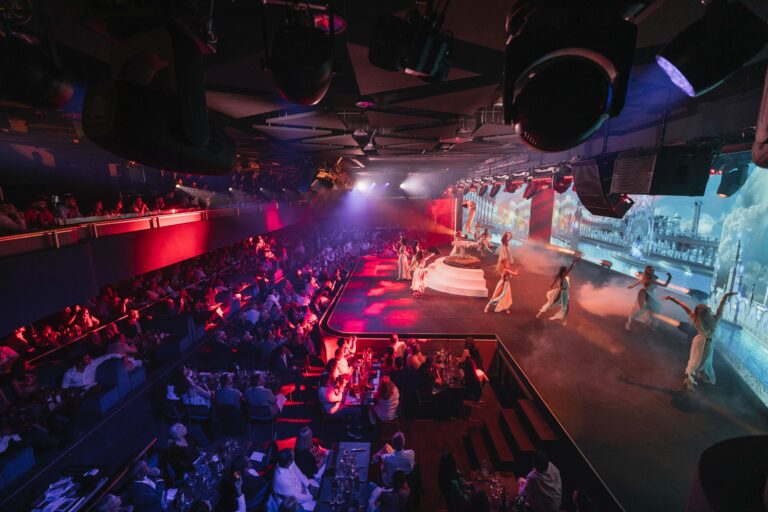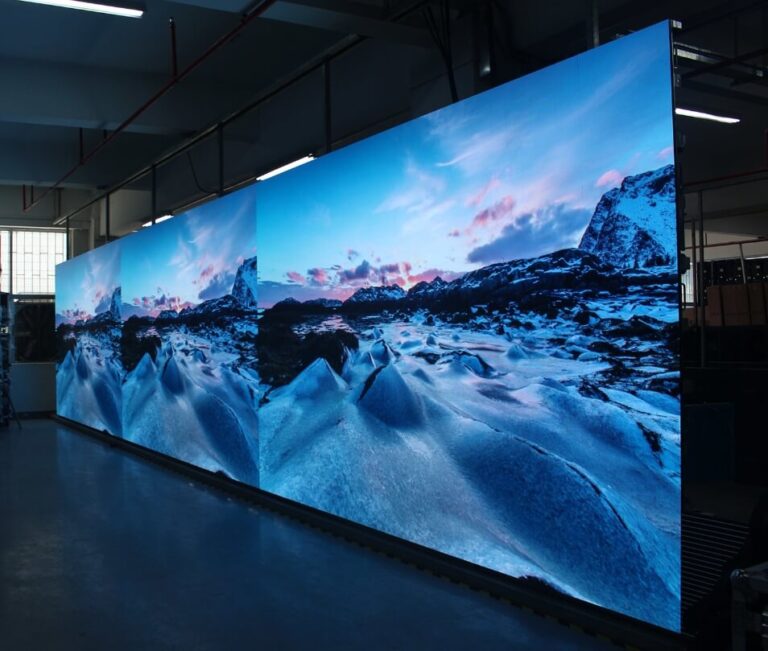Table of Contents
A. What Is a P2.5 LED Display?
B. Key Advantages of P2.5 LED Displays
C. Applications and Case Studies
D. Practical Tips for Buying Indoor P2.5 LED Displays
E. Specialized Equipment Needed for Installation
F. Special Requirements for Installing P2.5 LED Displays
G. Conclusion: A High-Value Option
As technology advances, LED display screens have rapidly evolved, becoming indispensable in various fields such as commercial advertising, education, and security monitoring. Among them, the P2.5 LED display has gained immense popularity due to its superior performance and versatility. This article explores the benefits of P2.5 LED screens and why they are the ideal choice for efficient indoor display solutions.
A. What Is a P2.5 LED Display?
In LED display terminology, “P” refers to pixel pitch, which is the distance (in millimeters) between the centers of two adjacent pixels. A P2.5 display has a pixel pitch of 2.5mm, offering high resolution and crisp visuals, making it ideal for applications requiring detailed images and close viewing distances.

B. Key Advantages of P2.5 LED Displays
- High Definition and Clarity
The P2.5 LED display delivers high-resolution images, capturing intricate details with remarkable precision. This feature is particularly crucial for environments like meeting rooms or exhibitions where text and graphics are central. - True-to-Life Colors
Equipped with advanced LEDs and control systems, P2.5 screens offer a wide color gamut and exceptional color accuracy. Whether displaying dynamic videos or static images, these screens provide vivid, layered visuals that captivate audiences. - Flexible Sizing
Thanks to its high pixel density, P2.5 displays can deliver the same resolution in smaller physical dimensions, making them suitable for diverse environments, from compact meeting spaces to large-scale digital signage. - Energy Efficiency
Modern P2.5 LED screens are designed with energy-saving features, significantly reducing power consumption compared to traditional displays. For instance, some models consume as little as 120 watts per square meter, making them eco-friendly and cost-effective. - Durability and Reliability
With a lifespan of over 100,000 hours (approximately 11 years of continuous use), P2.5 displays are built for longevity. Their robust components ensure minimal degradation in performance over time, providing a stable and reliable visual solution. - Ease of Installation and Maintenance
Featuring modular designs, P2.5 displays support front or rear maintenance, simplifying installation and repairs. This adaptability makes them ideal for quick deployment across various indoor settings.
C. Applications and Case Studies

Commercial Advertising
In premium malls or trade shows, P2.5 screens are perfect for brand promotions, showcasing products with stunning clarity and vibrant visuals.
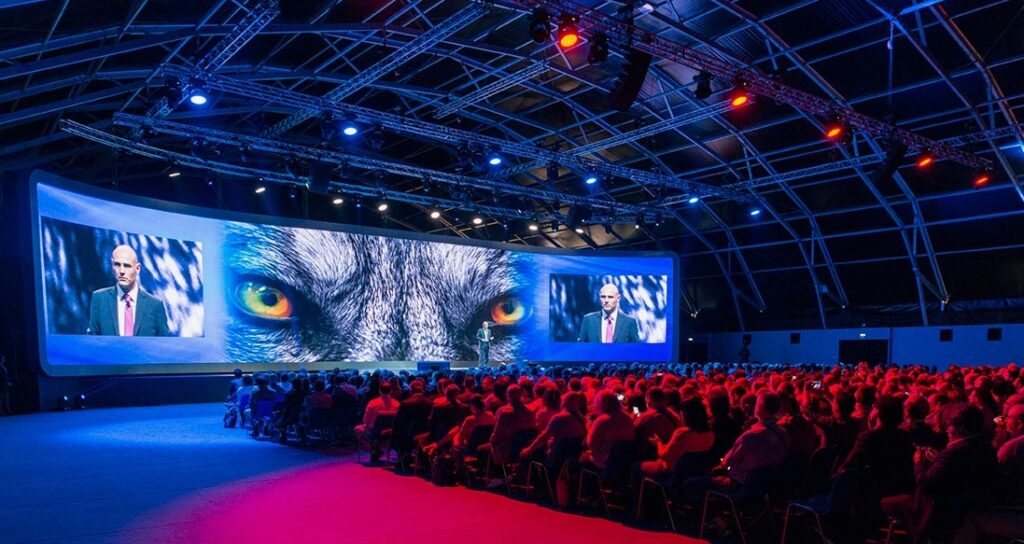
Corporate and Educational Settings
Replacing traditional projectors, P2.5 LED screens excel in conference rooms and classrooms, delivering crisp presentations and enhancing learning experiences.
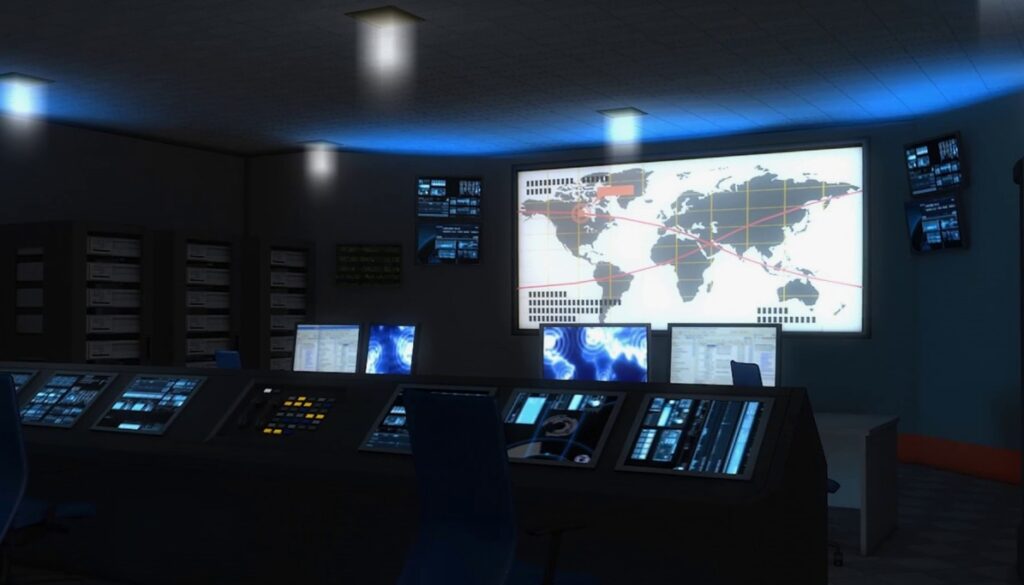
Security Monitoring
P2.5 displays are widely used in control centers, where their high resolution helps monitor and analyze detailed footage for effective decision-making.
D. Practical Tips for Buying Indoor P2.5 LED Displays
- Resolution and Pixel Density
Determine the required resolution based on viewing distance and content type. Higher pixel density translates to better image quality but comes at a higher cost. - Ease of Operation and Compatibility
Ensure the display is user-friendly and supports necessary input types. It should seamlessly integrate with your existing systems. - Key Parameters
- Brightness: Opt for 800-1200 nits for indoor use.
- Refresh Rate: Choose a refresh rate above 1920Hz for smooth visuals.
- Gray Scale: Higher gray scales (14-bit or above) enhance color depth.
- Contrast Ratio: A ratio of 3000:1 or higher ensures sharper visuals.
- Component Quality
Select screens with premium LED chips (e.g., Nationstar) and reliable driver ICs for better performance and longevity. - Supplier Reputation and After-Sales Service
- Warranty: Look for at least 2-3 years of warranty.
- Technical Support: Ensure the supplier provides installation guidance and training.
- Quick Response: Choose suppliers known for prompt issue resolution.
- Budget and Cost-Effectiveness
Balance cost and quality to achieve maximum value. - Sample Testing
Request sample units to evaluate display quality before committing to a purchase.
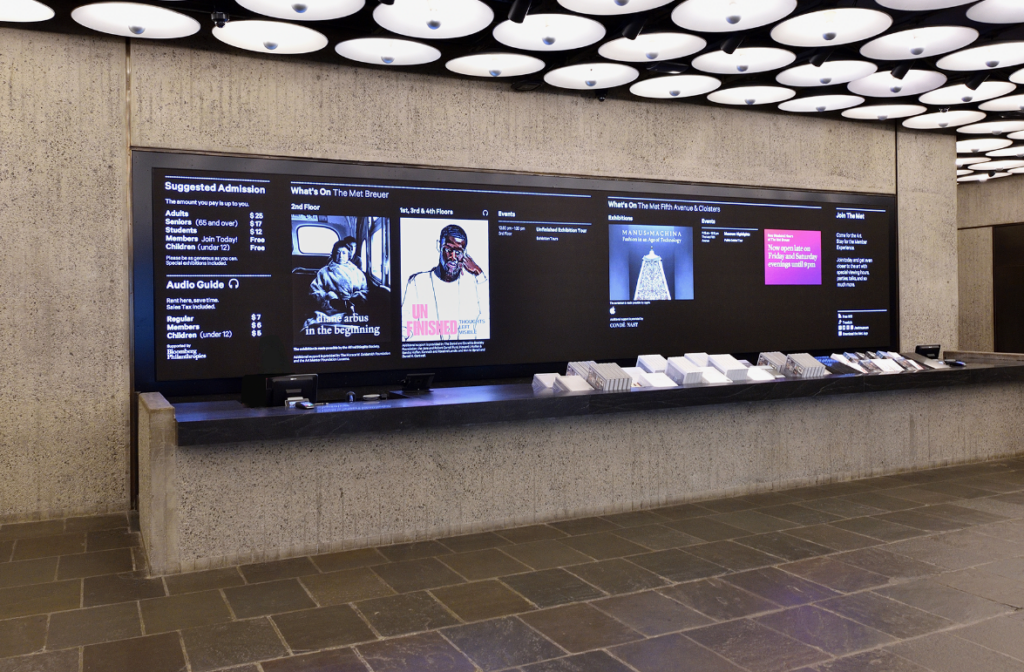
E. Specialized Equipment Needed for Installation
- Framework Materials: Aluminum or steel structures for mounting.
- Modules: The core components of LED screens.
- Cables and Power Supplies: Ensure stable connections and operations.
- Control Systems: For content management and display settings.
- Tools and Accessories: Cutting tools, mounting brackets, and testing instruments.
F. Special Requirements for Installing P2.5 LED Displays
- Site Assessment: Analyze load capacity, lighting conditions, and ventilation.
- Electrical Safety: Ensure proper grounding and overload protection.
- Heat Management: Implement effective cooling systems to avoid overheating.
- Precise Alignment: Ensure accurate installation for consistent pixel spacing.
- Cable Management: Organize cables to minimize interference and ease maintenance.
G. Conclusion: A High-Value Option
The P2.5 LED display combines stunning visuals, cost efficiency, and versatility, making it a top choice for businesses and organizations seeking high-quality indoor display solutions. Before purchasing, evaluate your requirements, assess the product’s specifications, and consult reputable suppliers to find the perfect screen for your needs.
For your next project, consider the advantages of a P2.5 LED display—it’s a decision you won’t regret!
References
Li, K., & Luo, X. (2018). High-Resolution LED Display Technology: A Review. Displays & Signage.
Kim, J., & Seo, Y. (2020). Energy Efficiency of LED Display Systems. Energy Efficiency Journal.

